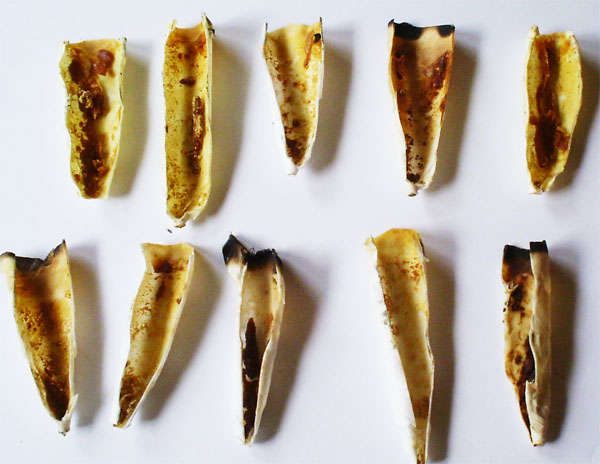Ear Candles: Do They Work?
A Scientific Experiment
In our blog for Healing Waters Clinic, we mentioned different perspectives on ear candles. Opinions about ear candles are polarized, the “believers” feeling that ear candles do marvelous things like halt ear and sinus infections, and the “unbelievers” claiming that ear candles are dangerous to your health. Our perspective was and is that if people find benefit in an alternative health practice like ear candling, and it does no harm, and then let them have the freedom to make up their own minds. The risk/benefit ratio of ear candling is very low actual risk to a perceived high benefit. Even if ear candles had no therapeutic benefit, what or who would be hurt by someone choosing to use them?
So far we are rehashing the main points of our first blog/article, but with a little different slant.
On to the ear candling experiment. When you burn an ear candle in someone’s ear there is often a mass or residue in the bottom of the cone. Most users believe this is wax being pulled out of the ear mixed in with systemic Candida albicans. We have heard some say that if you burn an ear candle without inserting it in someone’s ear, it still shows signs of “wax” and “Candida” residue in the bottom of the candle. The purpose of our experiment was to determine whether or not this is true.
We selected 10 ear candles of different varieties: paraffin, beeswax, and herbal. Each candle was lit and placed in a coffee cup to burn down by itself. Most of the candles took at least 15 minutes to burn. After the candles burned to approximately 2 inches, they were extinguished and cut open. Below are the results.


Four paraffin candles. The first two candles produced very little waxy residue in the bottom. The second set had very little wax, but lots of “white yellow powder,” (thought to be Candida albicans).
Three beeswax candles. All three candles produced a good bit of wax and yellow powder. One candle had more powder than others.
Three herbal candles. All three candles produced wax and white yellow powder.
Observation: Some candles had lots of wax; these tended to be beeswax and herbal types. Some candles had lots of yellow powder with little wax; these tended to be paraffin. Some candles had lots of both; these were the beeswax and herbal.
Our conclusion is that the residue in ear candles has nothing to do with anything being “pulled out” of a person’s ears. Some other factor is responsible for the experience of the ears being “unblocked” after an ear candling session. There are several possible explanations.
One is that there is a negative pressure created in the ears by the circulation of the smoke from the burning candle. This is a sensation reported by people undergoing ear candling; they feel “something” is happening and it feels good. Observation by an assistant holding the ear candle in a subject’s ear shows that smoke is indeed circulating in the ear canal.
A second idea is that somehow the ear candle’s burning, or presence of smoke in the ear subtly adjusts the cranial bones–in this instance, the temporal bones, in which the ear canal resides. A third possibility is that a neurological mechanism is engaged by the burning of the ear candle and the circulation of the smoke in the ear canal. A fourth explanation could be placebo, or suggestion, but that does not account for the majority of people who experience ear candling and believe something was “unblocked” in their ears and that they feel better.
We do not discourage people from using ear candles as a result of this test. Although we freely discuss our experiments (posting it on our web site is an example), we encourage people to use ear candles if they find benefit in their use. Our rationale lies in the cultural belief systems around healing. It is known that surgery and physical therapy are notoriously ineffective for certain conditions, and yet doctors recommend procedures and patients ask for them. People and groups pray for others in ill health or undergoing treatment. Does it help? Would you personally prefer someone not pray for you, or, rather, send a prayer your way if you thought it increased the odds of success? The point being is that a person’s experiences or beliefs are part of the process of healing – and some people find ear candling enormously effective.
We will attempt another similar test in the future and add the information to this article.
